Nudibranchs – What on earth are they?
 March 14, 2018
March 14, 2018
By Aidan Mock: As a diver, I have long wondered what exactly nudibranchs are. They are one of the more commonly sighted creatures on the Hantu reefs and come in an amazing array of colours, shapes, and sizes, but I’ve never really see them doing anything. I decided to spend some time investigating these creatures and share about them here. (Below: Dermatobranchus sp. spotted in Hantu on January 2018. Photo credit: Toh Chay Hoon)
A quick introduction
Nudibranchs get their name from the Latin word Nudus which means ‘naked’, and the Greek word brankhia for ‘gills’. While the first half of their name makes sense, the second can cause confusion – where are their gills? Nudibranchs’ gills are actually located on the feathery extensions that usually surround their anus.
These features that make nudibranchs such exquisite creatures are thus also responsible for their names!
The Nudibranch Life Cycle
Another question that I’ve always wondered – how do nudibranchs grow through their lifetimes? For most of us who have seen nudibranchs during our dives, the odds are that we’ve never seen a ‘baby’ nudibranch on the reefs. The life of a nudibranch actually begins in an egg sac laid by its parent. Nudibranchs create beautiful lattice structures composed of their eggs and attach these to the reef surface.
These eggs are small and have very little nutrients within them so the young hatch as soon as possible to begin feeding on resources in the water. Above: A lattice of nudibranch eggs at Pulau Hantu.
After hatching, nudibranchs enter a larval phase (much like many insects) and float through the water column grabbing whatever food they can find. They develop shells and look like extremely tiny water snails!

The larva pictured here is about 150 microns wide – the width of a human hair!
These larvae mostly feed on phytoplankton – a smaller type of plankton that photosynthesizes to produce energy. The larvae themselves do not have much control over their direction and float through the water for weeks or months, slowly growing in size. This extended period of floating allows them to travel further from their parents and potentially colonize new habitats!
How does a larval nudibranch know when it should stop floating around and settle down at a permanent home? Many species have been found to respond to chemicals that are released by the nudibranchs’ prey or habitat. Once the larva receives such chemical signals, it sinks to the sea bed and numerous changes happen to its body.

The larva loses its shell and the hairs that help it collect food from the water column (velum). It develops secondary gills (usually beautiful extensions near the anus) and then becomes a nudibranch that we are familiar with!

What do nudibranchs eat?
We know that in their larval phase, nudibranchs consume phytoplankton in the water column, but what do they eat in their adult phase? If you’re a diver, you’ve probably never seen a nudibranch munching on anything. That’s because the mouth and jaws of a nudibranch are located on the underside of the organism.
Note the mouth of this Elysia sea slug as it engulfs the algae. Photo: Nicholas Chew
Given their slow rate of movement, nudibranchs usually feed on other slow moving or immobile organisms on the ocean floor. This can include corals, anemone, seagrass, and other nudibranchs’ eggs. They take bites of their prey in their mouth and the food then travels down their digestive tract.
How do nudibranchs defend themselves?
Nudibranch seem rather defenceless, but the fact that they’re still around means that they do have methods of repelling predators. Some nudibranchs transfer the stingers from the prey that they consume (anemones / corals) to the extensions (cerata) that protrude from their skin. This is then used to sting any potential predators. Other nudibranch can produce toxic poisons on their own that are also stored in these extensions.
A diagram depecting a nudibranch’s digestive system, including how it stores poisons in its cerata.
Finally, nudibranchs also use their colours for defence. Vibrant colours are a sign of poison in any habitat and predators are usually careful not to prey on these colours. This explains why nudibranchs come in such vibrant varieties.
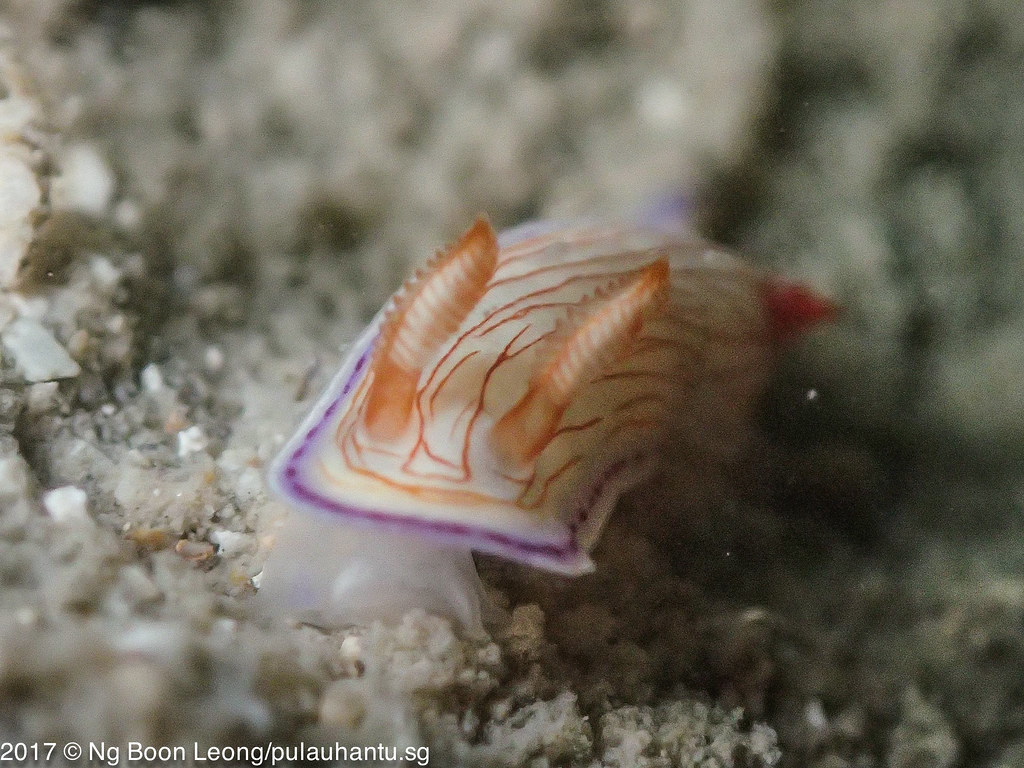
A Hypselodoris sp. Nudibranch from Pulau Hantu.
Can nudibranchs see?
Bornella anguilla is one of a handful of nudibranchs at Pulau Hantu with distinct eyes that divers can gaze into.
A common fact recited by dive instructors is that nudibranchs are ‘blind sea slugs’. This is only partially true. In fact, nudibranchs do have eyes, but they can only tell whether it is bright or dark. They do not have the ability to perceive shape, colour, or any other details. Scientists are still unsure what the function of these eyes are, but they suspect it could help inform the nudibranchs when a fish (or other potential predator) is passing overhead. It’s incredible to think that for all their splendid beauty, nudibranchs remain unaware of what they look like.
How do nudibranchs reproduce?
Nudibranches are hermaphrodites, meaning that they have the sexual organs of both sexes. They can therefore mate with any other member of the species they meet (although they cannot self-fertilize).
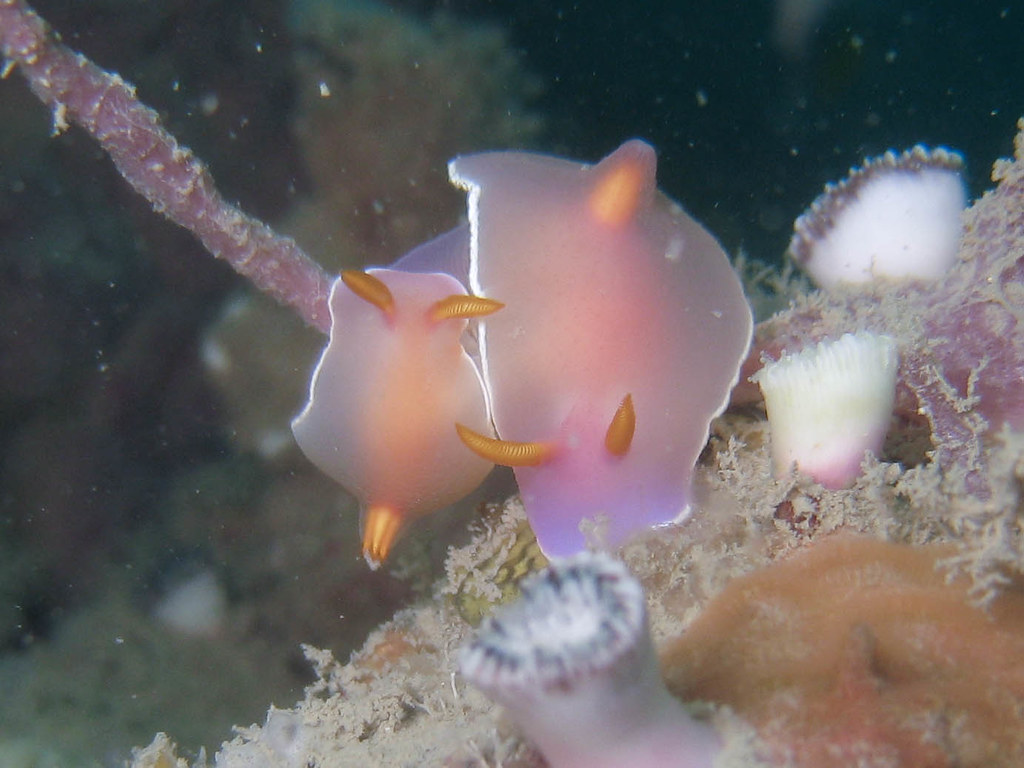
A pair of mating Hypselodoris bullocki from Pulau Hantu
Once they have mated, both individuals will lay their eggs. Nudibranchs are semelparous, which means that they only lay eggs once in their lifetime and die shortly after.
Why does all this matter?
At the end of the day, why does it matter that we know so much about nudibranchs? After all, some might argue that they are relatively small and unimportant creatures in the reef habitats. I respectfully disagree with this view. Firstly, more knowledge of any creature leads to better awareness of what these creatures do and why they might be important to reefs. While studying bigger creatures like sharks and dolphins might be more exciting, small creatures such as nudibranchs could also play important roles in the reef habitats that we don’t know about yet. Secondly, more knowledge of these creatures allows scientists to design conservation programmes in the future if nudibranchs do become endangered. Thirdly, a better understanding of nudibranchs might lead to us discovering additional uses for them. Horseshoe crabs are currently used to test for bacteria on medical equipment and are greatly beneficial for human wellbeing. Perhaps in the future, our knowledge of nudibranchs might produce outcomes that are beneficial for humans as well.
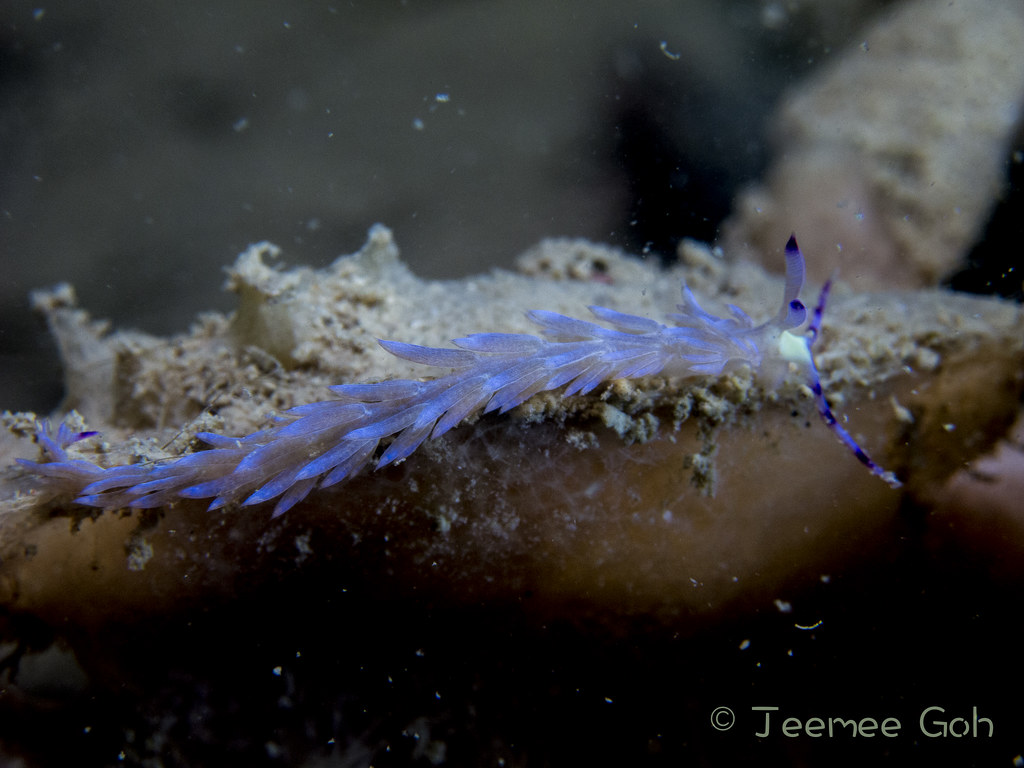 A Pteraeolidia ianthina from Pulau Hantu.
A Pteraeolidia ianthina from Pulau Hantu.
Finally, nudibranchs are some of the most beautiful and bizarre creatures to grace the face of this planet. It would be a shame for us not to better understand and appreciate these living works of art that have been shaped by millions of years of evolution. They just might be the finest masterpieces from the living museum of the deep.
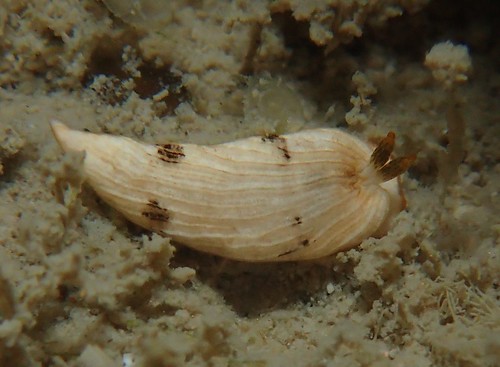
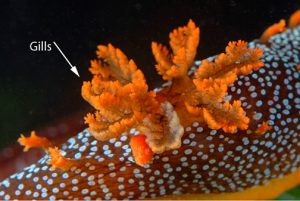




 Posted in
Posted in 



 content rss
content rss
COMMENTS